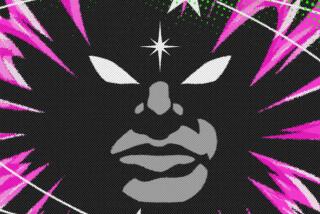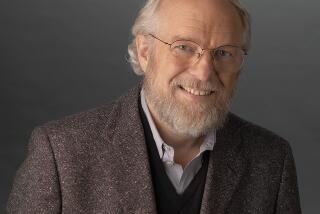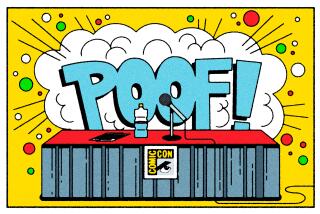Comics Software
- Share via
When the computer magazine they were working for folded 18 months ago, three Westsiders laughed their way out of adversity and into a business venture of their own.
David Durkee, Trici Venola and Kurt Wahlner were intent on preserving the close working relationships they built while at the publication. Together, they created a computer software program called the Comic Strip Factory, which was unveiled last month at Hi De Ho Comics in Santa Monica, in full view of venerable comics superheroes--alive and drawn.
The idea for the program was Venola’s. For a long time, people had been telling her of this or that scheme or gag or character they thought would make a great comic strip. Only, they couldn’t draw.
Well, Venola could draw, and furthermore, she could draw on the Macintosh computer.
The Comic Strip Factory is the expression of Venola’s philosophy that “people shouldn’t be as limited as they have been by lack of drawing ability.”
Venola drew several new characters (humans and animals) that can be used in the strips. But she also included elements that allow program users to create their own characters--a mix and match assortment of body parts that can be simply combined or specially customized. That aspect of the program, she said, makes it different from the other available comics software program, called Comic Works.
Venola turned to Wahlner (whom she had met and married while they were at “Softalk” magazine) to create scenery that can be used as background for the characters.
Movable, variable-sized “balloons” for dialogue means that a set of ready-made characters or hybrid creations can joke, cavort or even Bop! Bam! and Kapow! their way through panel after panel.
It was Durkee, a programmer, who put all the pieces together into computerese. And Durkee took his interest in the Comic Strip Factory a step further--thousands of miles further, in fact. He joined two other ex-magazine associates--in Minneapolis--and formed Foundation Publishing to release the software program.
Venola doesn’t think computer-generated comics will ever replace the hand-drawn variety. “There are a lot of really dreadful comics done on computers,” she said.
Now there’s a thought . . . How about this superhero, see, who turns himself into electronic impulses, infiltrating computers, and zaps all the bad comics, making the world safe. . . .?
More to Read
The biggest entertainment stories
Get our big stories about Hollywood, film, television, music, arts, culture and more right in your inbox as soon as they publish.
You may occasionally receive promotional content from the Los Angeles Times.










